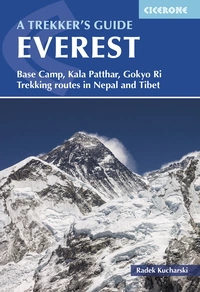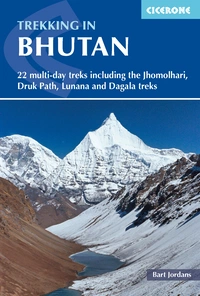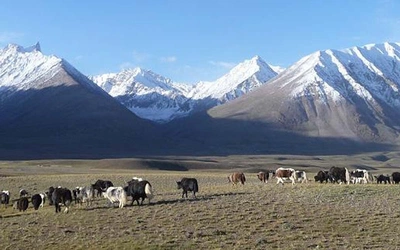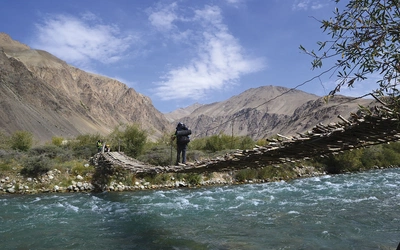Meeting the nomadic eagle hunters of Mongolia
Robin Pritchard travelled to the Altai district of Bayan/Ulgii Province, in the far west of Mongolia, to spend time with the famed Kazakh eagle hunters.
This region of Mongolia borders China and Russia where there is no longer a land link to Kazakhstan. As a result, these ethnic Kazakhs exist in a kind of bubble, removed from their historic roots. Few speak Mongolian and their lifestyle is more insular and traditional than that of their Kazakh cousins. By staying with families in their gers (yurts), I was able to witness their lives at a crucial time of the year when they were moving from their summer pastures to their winter camps.
The first family I stayed with were still at their summer camp at the far end of a valley leading up to the mountain range that marks the border with China. After a fairly grueling day on dirt roads in our Russian-built Furgon 4x4 van, we reached an isolated camp of four gers.
This really was the end of the road. The last outpost of human existence this side of the border.
Hunting with eagles
These families traditionally hunt using trained eagles. Although this practice is largely preserved in the form of tournaments, there were enough pelts on the wall of our ger to suggest it is still an essential survival activity.
During our five-day stay I was invited to witness a training exercise for the forthcoming eagle hunt festival. Our extended family had four Steppe eagles between them and our host and his 13-year-old daughter dressed in traditional costume for the occasion. It was heartwarming to see her preserving her cultural heritage.
In reality, eagle hunting is conducted from horseback and so it was to be for our demonstration. The hunter rode with one of the birds to a high vantage point on a nearby hillside. The ‘catcher’ held aloft the bait of raw meat and the eagle swooped down to collect it. With a 2-metre wingspan they cut an impressive sight perched on the gloved hand of a young teenager.
The rest of our time there was spent exploring the mountains and valleys leading up to the Chinese border. Our young eagle hunter doubled as our guide for the walks. There are no trees there and, although the landscape is broad and open, the distances can be deceptive. There are no maps and, of course, there is no one to ask for directions.
Inside a ger
Kazakh gers differ slightly from Mongolian ones in that they are smaller, but the basic design is the same: a circular collapsible trellis covered with an inner layer of felt, the outside being overlayed with a weatherproof white canvas. The inside is then lined by vibrant decorative woven wall hangings. Poles rise from the outer walls to a circular aperture in the roof, which can be partially or wholly closed depending on the weather. The dung-fueled stove sits in the middle of the ger with a chimney flue leading up through the opening. Beds and any other furniture are arranged around the walls with one area dedicated to storage. Well-to-do families have rugs on the ground but I did stay in one ger with bare earth floors. Guest are invited to sit pride of place opposite the brightly painted wooden entrance door.
Age-old Kazakh hospitality is offered to visitors in the form of a generous supply of mutton and cheese washed down with lashings of buttered tea or fermented mare’s milk.

Moving camp
During the time we were at the summer camp the neighbouring families packed up and moved to their winter pasture. Our family would leave the day after we departed. The wild blueberry bushes had already acquired their rich autumnal colours and the cold nights suggested that even in late August winter was not far away. Patches of permanent snow clung to the upper mountains and the grassland was starting to look barren.
Historically, gers and all their contents would have been loaded on to bactrian camels and yaks for the annual migration, but in one of the few concessions to the 21st century, this is now done using aging lorries. After the ger has been dismantled everything has to be loaded on to the lorry (furniture, stoves, supplies, personal possessions and even the precious dung needed for fuel over winter). The children and other family members cram into the cabin for the torturous journey.
During the migration the livestock of goats, sheep, yaks, horses and cattle have to be herded separately. This is done on horseback, usually by the older sons of the family, with only their guard dogs for company. It takes several days and they may have to rely on the hospitality of other families on route.
Winter camp
Over the summer, grazing had reduced the high-altitude steppe grass to virtually nothing, but at the lower altitude winter camps the grass had been left to grow. Hay is hand cut with a scythe and transported by lorry for storage. Subsequently, once at the winter camp the livestock has a short-lived glut of fresh grass.
In a scene reminiscent of the American Wild West, cattle and horses were driven across a river by a horseman wielding a rope lasso. A boy no older than 12 thundered past bareback, gripping his mount with over-sized wellingtons. A timeless scene set against a spectacular background. The late afternoon light cast moving shadows across the ever-changing rolling landscape. In the far distance the 4000m snowcapped peaks of the Tavan Bogd Mountain range turned from gold to pink. In the foreground a camel sauntered past. Smoke drifted from the chimneys of the gers dotted around the grassland. The only sound was that of a black kite mewing overhead. I spent a happy afternoon sitting mesmerised with my camera. It was an evening that I never wanted to end.












